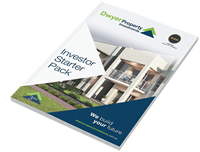There are numerous national economic factors to consider when investing in the Australian property market, but do you know what the key driver is? What is it that sends prices soaring?
We know that the state of the economy is particularly important; and we know that supply and demand plays a role too. We also know that infrastructure spending can sway investors, as does population growth, the unemployment rate, location, and the availability of finance. But none of these are the key driver for capital growth. While all the above are extremely important and certainly affect our real estate markets, there’s another factor that drives property values above all others.
When trying to locate areas that are prime capital growth areas, investors must assess all components, including interest rates, supply and demand, liveability, and infrastructure improvements. However, one component that’s often overlooked by investors is that the sector that typically drives our property markets forward are home occupiers.
You may not be aware that home occupiers own approximately 70% of all Australian properties, which means that this sector dominates our property market. Without homeowners, there wouldn’t be a property market to invest in.
With two-thirds of the property market consisting of owner occupiers, one wonders why they’re typically overlooked by investors. It stands to reason, therefore, that it must be this sector of the property market that underpins the steady growth of property values, therefore significantly influencing property values.
This means that investors comprise around 30% of the market, so investors alone cannot create property booms and property downturns. Booms are typically driven by greed, or fear of missing out, while downturns are caused by volatility, when investors sit on the sidelines or exit the market.
The Australian Bureau of Statistics (ABS) and CoreLogic recently released the following snapshot of the national property market –
So what do these figures tell us? They tell us that owner occupiers are the largest sector of the property market; and that owner occupiers outnumber investors two to one.
These figures should send a clear message to investors. When you’re doing your research and looking for a strong property performer, you must consider properties that appeal to home occupiers, because the figures tell us that an investment-grade property must be appealing to home occupiers.
You don’t necessarily need to be planning on selling your investment property, but you do need to invest in a property that’s appealing to homebuyers. Why? Because homebuyers will improve the value of your investment property by purchasing a property near yours. What you really want is for affluent home occupiers - those who have the finance and who are happy to pay good money to own property located in a modern and growing suburb - to be attracted to property like yours!
Most investors are considering who their tenant might be; what their tax benefits will be, and how much rent they’ll be able to ask. They then purchase a property in a high-rise apartment building and are confused as to why they have an underperforming investment.
Now consider the alternative. If you were to purchase an investment property with an element of scarcity, one that’s positioned close to transport, jobs, great amenities, schools, and social, cultural, and lifestyle attractions like restaurants, bars, and arts precincts, you know that these are important factors that influence and attract homebuyers.
And it’s these features that appeal to tenants too. It makes sense, then, that buying an investment property that ticks all these boxes pretty-much guarantees that you’re investing in a property that appeals to homeowners and tenants alike.
How many times have we seen “Location Location Location” scrawled upon a real estate agent’s billboard. And it’s true that the location of your real estate investment has a huge influence on your property’s capital growth. However, it’s not solely about location, because some suburbs have more scarcity than others, some suburbs are more popular than others, and we know that in some suburbs the land value will increase more than others over a period of time.
This is yet another reason why your investment property should be located in a suburb that’s mostly settled by homeowners, more so than a suburb that’s predominated by tenants.
You may have already noticed that there are areas where more affluent homeowners live that consistently outperform outer, cheaper suburbs where wages growth, or lack of wages growth, prevents an area from moving forward.
The key to achieving strong capital growth in the medium-to-long term is to invest in a good quality build in an area that’s attractive to homeowners.


Jason is the Managing Director of Dwyer Property Investments and a trusted local expert. Together with build partner Dwyer Quality Homes, he’s been helping Queenslanders buy profitable, cash-positive, tax-effective investment property for 35 years. Visit dwyerpropertyinvestments.com.au.

Privacy Policy | © 2020 Dwyer Property Investments. All Rights Reserved.